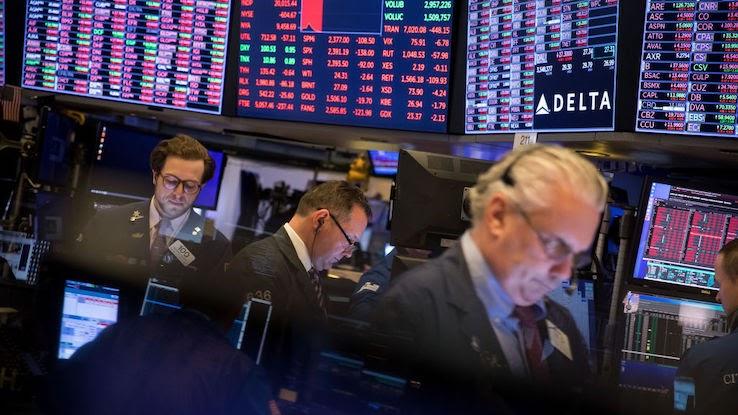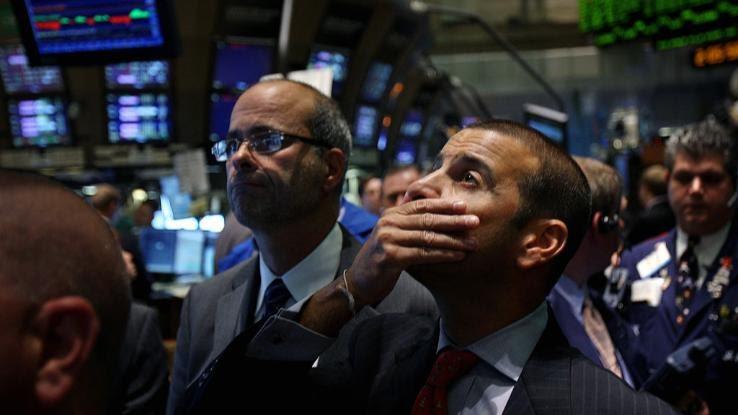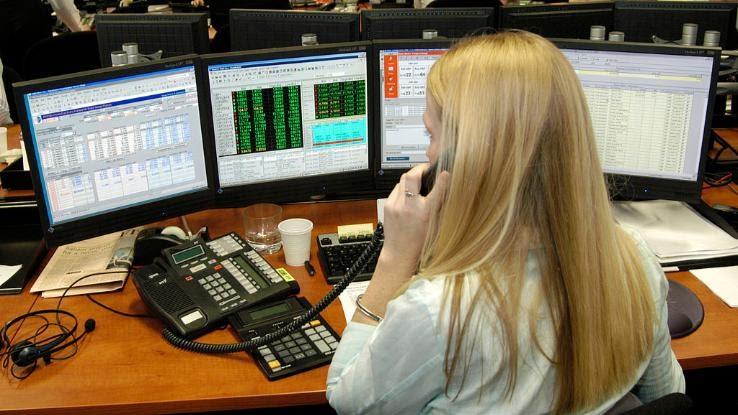Which Of The Following Represents The Change In The Capital Stock?

What does it mean for investors when a company announces a contrary stock separate? If you're familiar with stock trading, then yous've probable heard of a forward stock divide, which is a process that can leave investors holding more shares than they did before without having to make a purchase of more stocks. A contrary stock split is essentially the opposite and happens when a visitor decides to consolidate the number of shares it has available on the market.
But is a reverse stock split adept news or bad news for your finances, and what exactly does it hateful for your portfolio? Have a closer expect into why companies perform these consolidations and how these actions affect investors.
What Is Reverse Stock Splitting?

To best sympathize what a reverse stock separate is, information technology's helpful to kickoff define a forward stock separate. During a forward stock carve up, a company divides each one of its shares into multiple smaller shares. This leaves investors with more shares of a stock than they'd originally purchased.
Say, for instance, that you lot held one share in a company, and that share was worth $300. If the visitor decided to do a 3:1 forwards stock split, you'd end up with three shares, each of which would be worth $100. While the total value of your holdings in the company didn't change, your number of shares did. The thought here is that by lowering the toll of its shares, a visitor hopes that more people volition be attracted to invest in them and the share prices can continue to grow in the long run. A forward split makes shares of stock more than accessible to people who may have been hesitant to invest earlier due to the higher previous costs per share.
In a opposite stock split, companies go the opposite route and combine existing shares into a smaller number of shares. Thus, each share becomes more than valuable. In this instance, imagine that you held iv shares in a company, each of which was trading at $25. If the visitor appear a 1:4 reverse split, you lot'd finish up owning only one share worth $100.
While neither a forward nor reverse stock split initially changes the value of an investor's holdings, each has implications that can affect the long-term forcefulness of the investment.
What Does a Reverse Stock Split Signify?

A frontward split is generally considered proficient news and signifies that a company is doing well. Reverse splits, yet, don't tend to be so popular among shareholders. While it'southward rarely considered good news, whether or not a reverse split is actually bad news frequently depends on the reason that the visitor decided to perform this action. At that place are a few common reasons companies opt for contrary splits.
Attempts to Legitimize the Company's Share Toll
When a company is struggling, its share cost normally reflects these difficulties — often by dropping. When a stock's price hits sure low points, it can be almost impossible for information technology to depict the support of big, institutional investors. Given the fact that institutional investing is largely responsible for a stock toll'southward motion, this tin bespeak a problem every bit far equally hereafter growth is concerned. When a stock cost dips to under $five, for case, it'southward considered a penny stock, and the odds are slim that institutions will even consider investing in it. A opposite carve up is a quick manner to heave a stock's cost in an endeavor to prevent the appearance that a company's finances are in trouble.
Avoidance of Delisting
Another common reason for the opposite split is the fact that, if a stock's price falls below $1 for a certain length of time, it may be removed from its exchange. This makes it much more than hard for people to trade the stock. To avoid delisting, a company may conduct a contrary split to temporarily boost the stocks' price in the hopes of recovering before it's as well late. A company may also perform a reverse separate due to impending bad news or poor performance that information technology anticipates will presently tank its stock toll. By inflating the share price before the potential plunge, the company gives the stock more room to plummet before it reaches either penny-stock or sub-$1 condition.
Lowering Transaction Costs
This is another tactic that goes back to an attempt to attract institutional investors. These types of investors prefer to buy large numbers of shares, which tin go expensive on lower-priced stocks due to the associated per-share transaction fees. By combining a large number of low-value shares into a smaller number of higher-value shares, a company can brand the prospect of investing look more than attractive to institutions.
How Does a Contrary Split Impact Investors?

The ways a reverse stock tin can touch on shareholders largely depend on the company'due south reason for making such a decision. If you detect that some of your holdings have been consolidated in a reverse split, you'll definitely desire to find out why. While the reverse separate isn't generally seen every bit a positive sign for a company, it'due south a move that'southward not without its pros and cons.
On the upside, a reverse dissever may keep a stock from plummeting to a cost and then depression that institutional investors are unable to continue to buy or concord it. In this regard, the reverse dissever tin help requite investors more time to decide whether they want to stick with the stock rather than being forced out due to institutional dumping.
While a reverse dissever isn't e'er enough to keep institutions from selling shares en masse, it at to the lowest degree helps guarantee that they take an choice. The obvious downside is that a reverse split isn't by and large a move that companies brand when they're performing well. Information technology's often a sign of either poor performance or bad news on the horizon.
Mitigating the Effects of a Reverse Divide

What do you do if you're a shareholder in a company that pulls a reverse split? Again, the kickoff task is to figure out why the visitor went this road so you can ameliorate anticipate the direction the stock may head. Have bad management decisions or poor performance led to a breakup in stock prices? Or is the visitor only navigating a temporary setback due to an event outside its control?
It could even exist that the company in question is a spinoff of a larger, more successful company that wants to legitimize its stock prices. Once you lot sympathize the reasoning behind the reverse split up, you'll be in a much better position to choose whether yous want to concord your shares or sell.
If the company appears to be struggling due to fiscal difficulties, practice you believe it stands a chance at making a comeback? Positive cost reversals often come on the tails of the upcoming launch of a hot new production, new management or other good news, such as the blessing of a trial drug for a pharmaceutical company. If you do foresee this possibility, then the stock may be worth holding onto.
If, however, there's no sign of a brighter hereafter ahead, you lot may want to jump ship while you still can. If a visitor is manifestly struggling and showing no signs of reversing, you lot don't want to lose more than money than you lot have to.
Sometimes, things may not be clear either manner. In this instance, yous can minimize your chance by scaling downwards and selling part of your shares while retaining others. You also take the choice of setting a sell-stop or trailing sell-stop so that your shares will automatically trigger a sell order if the company's stock cost drops beneath a sure cost or drops past a certain percentage.
Source: https://www.askmoney.com/investing/reverse-stock-split?utm_content=params%3Ao%3D1465803%26ad%3DdirN%26qo%3DserpIndex
Posted by: pintodeshe1976.blogspot.com



0 Response to "Which Of The Following Represents The Change In The Capital Stock?"
Post a Comment